new posts in all blogs
Viewing Blog: The National Writing for Children Center, Most Recent at Top
Results 1 - 25 of 1,408
.jpg)
Home of the Children's Writers Coaching Club
Statistics for The National Writing for Children Center
Number of Readers that added this blog to their MyJacketFlap: 17
Penelope Anne Cole has taught at every grade level. She enjoys writing children’s stories to be read aloud. “Reading to children is the best way to help them love literature.” When not writing or reviewing children’s books, Ms. Cole enjoys dog walking, reading, church, and choir activities. Ms. Cole is a member of the Society of Children’s Book Writers and Illustrators, and is a Reading Therapist with Read America. Ms. Cole reviews books at
http://pennyreviews-chat.blogspot.com/
See reviews of Ms. Cole’s books at
http://reviewsforpenny.blogspot.com/
Her website is www.penelopeannecole.com
The post Penelope Anne Cole appeared first on The National Writing for Children Center.
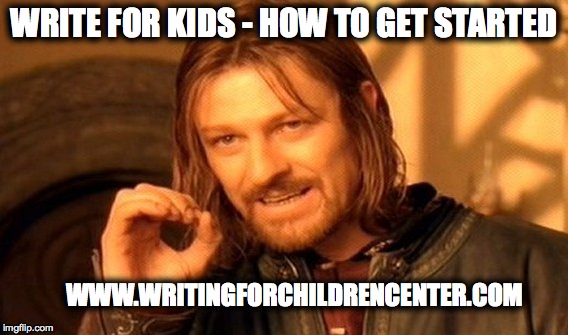
Have you been thinking of creating your own stories for children, but you just don’t know how to get started?
Then here are some tips to help you start your own career as a published children’s author:
1. Join your local chapter of the Society of Children’s Book Authors & Illustrators (SCBWI) and then start attending some of this chapter’s regular events.
Just go online to www.scbwi.org to learn more about this wonderful organization for anyone interested in children’s publishing.
2. Take a field trip to your local book store or library and read all the children’s books you can.
Be sure to read some of the most current books for children on the market.
Children’s publishing has changed over the years and you need to know the types of books for children that are being published today.
There are also different genres of books for children, so be sure to read books in the genre or genres that you wish to write.
For example, if you want to write picture books, read picture books.
If you want to write middle grade novels, read middle grade novels.
If you want to write nonfiction books for children, read a wide variety of nonfiction books from many different children’s educational publishers.
3. Take a writing course that is specifically for children’s writing.
Writing for kids is much different from writing for grown ups, so you need to take a class or workshop that will address all the elements of writing and publishing FOR CHILDREN.
Try to find a class or workshop taught by a published children’s author and/or editor.
4. Join or start a local critique group for children’s writers.
Be sure the group includes at least one or two published children’s authors.
Otherwise, the group will be little more than “the blind leading the blind.”
5. Submit your stories and articles to publishers.
You’ll never get published if you don’t send in your manuscripts.
It can be scary at first.
But you’ll soon realize that rejections are just part of the process.
6. Be persistent.
Don’t give up.
It can take a while to break in with any of the children’s markets.
But keep trying.
If you keep writing, keep learning, and keep submitting, eventually you’ll sell one of your children’s stories or articles.
Now…just get started!
Try it!

The Working Writer’s Coach
www.workingwriterscoach.com
The post Write for Kids – How to Get Started appeared first on The National Writing for Children Center.
This week the National Writing for Children Center is sponsoring a 5-day virtual tour for Michael Selden’s new book, The Balance.
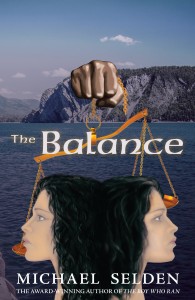
Follow along on this tour. Leave a comment and you’ll be entered in a drawing to win a free month’s showcase here for your children’s books.
Start Michael’s tour here:
Virtual Book Tours
The post Follow Along on the Virtual Tour for The Balance by Michael Selden appeared first on The National Writing for Children Center.
Michael Selden will be the guest author on Book Bites for Kids later this month to talk about his new book, The Balance.
Until then, you can learn more about Michael and his books at www.michaelselden.com.
The post An Interview with Michael Selden appeared first on The National Writing for Children Center.
THE BALANCE is a Young Adult novel, set in a dystopian future.
is a Young Adult novel, set in a dystopian future.
It takes place almost 200 years after a global thermonuclear war.
People in the Land survived the destruction of the world war only to have their lives disrupted again by a wayward asteroid.
It broke up and rained down on the planet, just as life had begun to regain a sense of normalcy.
This second tragedy disturbed the power sharing arrangement between the two leading factions that had helped rebuild the Land–the Council, and the Order–under an agreement called “The Balance.”
The Council’s leaders exploited the chaos that followed and drove the Order and its members into exile.
Afterward, the Council banned the use of most modern technology, which their leaders blamed for the war.
Seventeen year old Phoebe was the last product of the Order’s genetic engineering programs, and she lives under the Council’s rule.
Phoebe doesn’t understand why she’s so different from everyone else, and she struggles to survive while hiding her strangeness.
Members of the exiled Order have come to realize her condition and their leader, a Prescient, sees a potential in her that might allow them to regain their place in society, and to re-establish The Balance.
The post The Balance appeared first on The National Writing for Children Center.
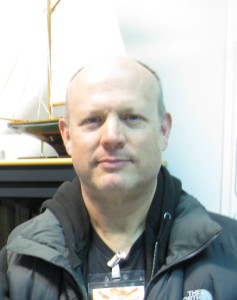 Michael Selden lived all over the world as a child, and spent a career as a physicist and program manager on research projects, both international science projects and advanced development programs for the department of defense.
Michael Selden lived all over the world as a child, and spent a career as a physicist and program manager on research projects, both international science projects and advanced development programs for the department of defense.
In 2013, he decided to change what he was doing and retired to settle in a small mountain community in Colorado to write fiction.
Reading and writing have interested him throughout his life and he is taking the same approach to writing that he applied to his career as a physicist: always challenging himself by tackling different genres, and by writing from differing perspectives.
His first book was THE BOY WHO RAN, a middle grade novel set in the mid-archaic period in North America, around 4000BC.
The book won the 2014 IPPY gold medal for juvenile fiction.
An audio version of the book is currently under production and is being narrated by Lyssa Browne, of Cedar House Audio.
There are also tentative plans to release an Italian language version of the book.
His latest book, THE BALANCE, will eventually be a 3-part story. THE BALANCE is a futuristic dystopian novel written for a young adult (and older) audience.
Part two, subtitled THE WASTELANDS AND THE WILDERNESS will be targeted at a new adult audience, and is planned for 2018.
A third book, I AM, should be released in late spring 2016. I AM is a science fiction novel written for a new adult audience.
Michael spent three months in Rome researching what will be his fourth book, DISOBEDIENCE, a supernatural thriller, and he plans to travel to Provence, France later this year to research additional chapters.
The post Michel Selden appeared first on The National Writing for Children Center.

In February, what child doesn’t enjoy receiving and sending colorful Valentine’s Day cards?
And whether children make the cards themselves or simply sign their name to a card they buy, the act of sending and receiving Valentine’s Day cards is one that promotes literacy among young children.
Why?
Because it encourages reading, writing, and even talking about the Valentine’s cards with friends and/or family.
Most children love creating a Valentines Mailbox.
They can make a mailbox for school and one for home, too.
In fact, at home encourage everyone in the family to build a mailbox and exchange Valentines and other cards, notes, and letters all month long.
The mail doesn’t need to stop when March rolls around either.
Children will be used to the practice of sending and receiving mail by that time and they probably won’t want to give it up.
In March, encourage them to create cards and notes for St. Patrick’s Day.
Of course, there are all sorts of reasons to send mail every single day.
And by making it fun for kids to send and receive mail, they start to value the written word more and more.
And they are doing so in a way that is “authentic” because they really want to be able to read what that card from their father says, or they want to know how to spell a word correctly in a message they are putting in their sister’s mailbox.
Using Mailboxes in the Classroom
Teachers can also use the mail as a way for children to write about books they read or topics they study in the classroom.
Letters or cards can be sent from one child to another answering specific questions about a specific book.
The teacher might ask the class to writer a letter to a friend in class telling who their favorite character was in the book, what they liked best about the book, what they would do differently if they were the writing a book like this, etc.
When the children finish writing the letters they can put them in the mailboxes.
Later, everyone can read the letters and share them with the class as a class activity.
Write Notes Throughout the Day
As a parent or teacher, jot little notes and put them in your children’s or students’ mailboxes throughout the day.
If you’re a busy teacher, you don’t have to send a note to every child in your class every day. Just one note a day to one student will do.
It’s also fun if kids can create a mailbox that has a flag that can be raised or lowered when someone puts mail in the box.
The raised flag lets the child know “You’ve got mail!”
In the classroom, children can make reading, writing, and distributing the mail a daily practice at a specific time.
That way, kids won’t be running around to all the mailboxes at all times of day.
They’ll really look forward to the “mail call” part of the day!
The post Valentines Mailboxes an Early Literacy Activity appeared first on The National Writing for Children Center.

Want to help kids make sense of what they hear in the news?
Do you think more should be done to expose them to stories of different religions, customs and cultures?
Then join mom bloggers, authors, educators, librarians and people from all walks of life as they celebrate Multicultural Children’s Book Day and trend on Twitter at #ReadYourWorld this January 27th.
Visit www.multiculturalchildrensbookday.com to learn how you can help put thousands of free diversity books into schools and into the hands of families nationwide.
Plus you can access hundreds of resource lists and topical articles; and to learn how, for just $25, you can give a shout out to two favorite multicultural books and we’ll post your name as a Friend of Multicultural Children’s Book Day.
The post Today is Multicultural Children’s Book Day appeared first on The National Writing for Children Center.
(written by Sandman, cat and writing buddy of Nancy I. Sanders)

Everyone wants primary sources in their nonfiction and even references for facts in their fiction these days.
What’s a cat gonna do?
I tried hiding in a bag and never dealing with it, but then I got too hungry for tunafish tacos so I had to come out.
So I decided to try a new tactic. I’d hunt those primary sources down and pounce on ‘em! First plan of attack was to sneak around the house, hide behind the couch, and jump out at any unsuspecting spider crawling by.
But that didn’t get me very many primary sources.
What are primary sources anyhow?
I looked up the definition of primary sources in my cat-dictionary and discovered they are:
Autobiographies: Whenever a cool cat writes a book or article about her own life, it counts as a primary source.
Diaries: My cat friend, Pitterpat, keeps a diary and in it she chronicles every detail about Devin and Derby, the two Rat terriers who live next door. Pitterpat knows those little yappers are up to evil designs and she’s determined to prove it! Diaries are a primary source.
More primary sources include
• letters people actually wrote
• artifacts, buildings and landmarks that were actually there during the era
• e-mails, interviews, photographs, official documents
• and speeches people actually spoke
But how do you FIND primary sources? I’ve tried digging in the dirt in every single potted plant in our house, pulling out all the tissues and reaching in the bottom of a tissue box, and shredding every paper that comes out of the printer, but that only got me in trouble!
So then I tried a new tactic. I already had a pile of picture books and books for kittens on my topic. This time, however, I went to my library and borrowed every book on my topic written for mature cats. These books have FOOTNOTES. (I think they should call them pawprints.) And these books list many many primary sources in the back where they cite those pawprints…I mean footnotes.
Plus these books have PHOTOGRAPHS and PAINTINGS from the actual era of my topic. I looked in the back for the places who own those primary sources and made a note to contact them and find out what kind of permissions they give to cats who want to use them. (Like me.) And when I contact them I’ll find out if it’s free to use them or if I have to pay them to use it. Plus they’ll tell me how I can get the right resolution to use on my website or in my article or book.
Then I went online and googled my topic. I didn’t look at Wikipedia like I normally do. (Okay, okay, I know that’s a no-no for research but it’s handy!) Instead, I read articles that looked official on my topic that were posted by museums and universities and national archives. I looked at THEIR footnotes to see where they got their primary sources. Plus, a lot of them have digitized primary sources such as diaries and ancient autobiographies and paintings and images of artifacts. So I checked on each of their pages for “rights and permissions” and details about how I can use the information from their sites. I even e-mailed the contact e-mails and asked people about rights and permissions, just to cover my bases.
So when my writing buddy, Nancy I. Sanders, was writing her book on Frederick Douglass for Kids, I gave her some tips and advice.
For example, I told her she could find this photograph of Frederick Douglass at the Library of Congress Prints and Photographs site.
It says: Rights Advisory: No Known Restrictions on Publication
I assured her she could be pretty safe using that photograph in any way, shape or form as long as she included the credit line with it.
What kind of credit line, she wanted to know. Yikes! Does a cat have to know everything?! I told her to dig around on the Library of Congress site to see what kind of credit line they say to use. I also told her to check in other books by the same publisher that she was writing for (or another current publisher who uses stuff from the Library of Congress) and see how they are citing the Library of Congress.
But then I told her she had to be careful about using this photo of Frederick Douglass from the Library of Congress because it did NOT include that same line about rights advisory. She’d have to try to find out who owned it and ask THEM for permission to use it and details about how that could be done.
Plus I told her to check out museums and historic sites on Frederick Douglass, so she did. She found out that places like the National Park Service would let her use their digital images for free on her website as long as she included the credit line they want. So she did! You can see how she did this and you’ll also see this awesome painting of Douglass that’s on her book’s website by clicking here. Plus, she found out she could use images for a cost in her book. They told her the steps to take and the fees it would involve. So she did!
I guess you could say working with primary sources is like hunting for ants. I can hear them marching behind the baseboard inside the wall, but I gotta figure out how to get them out here in the open where I can eat them. I’ve tried smearing tunafish next to a little nail hole. That worked for a little while. They came out by the hundreds! But then the pest control guy was called out to spray them. So now I gotta think about my next strategy.
The bottom line is that there is no specific strategy for hunting ants except for search and dig around and search and call or e-mail the people you gotta call. It’s the same for working with primary sources. It’s just what a cat’s gotta do.
For more information, tips, and techniques on research, visit the site of Sandman and his writing buddies at https://writingaccordingtohumphrey.wordpress.com/writers-notebook-worksheets/ or get Nancy’s how-to book for children’s writers, Yes! You Can Learn How to Write Children’s Books, Get Them Published, and Build a Successful Writing Career at http://yesyoucanlearn.wordpress.com
Want to learn how to write a children’s nonfiction book in just one month?
Register for this online audio workshop, below.
Find out more at www.writeachildrensnonfictionbook.com.

For more informative and cat-chy articles by Nancy’s cats, please visit their website at:
https://writingaccordingtohumphrey.wordpress.com
Writing for educational book publishers and book packagers can be financially lucrative and a great source of ongoing work for freelancers.
These markets are expanding in today’s world of Common Core Standards and the subsequent emphasis on quality supplemental classroom nonfiction materials.
But this type of work is not for everyone, and breaking into educational publishing is somewhat different than publishing trade books.

In this workshop/teleclass, children’s author Melissa Abramovitz presents information on what educational book publishers and book packagers are, how to evaluate whether or not this type of publishing is for you, and what is involved in breaking into/writing for these markets.
In this workshop you will learn and discover:
• What educational publishers and book packagers are and how they differ
• How to evaluate whether or not this type of work is right for you
• Trends in educational publishing, with tips and information from educational book publishers and book packaging company insiders
• How to find educational book publishers and book packagers that work with freelancers
• How to put together a pitch/query/resume to use in seeking this type of book assignments
• What the advantages are of working for educational book publishers and packagers
• Answers to your questions about educational book publishing and book packagers
REGISTER HERE NOW to get immediate and unlimited access to the full audio and handouts for this workshop for only $20.00!
About Melissa Abramovitz
Melissa Abramovitz has published hundreds of nonfiction magazine articles, more than 45 educational series books for children and teens, numerous short stories and poems, two picture books, and a book for writers. Melissa graduated from the University of California, San Diego with a degree in psychology and is also a graduate of The Institute of Children’s Literature. She is a member of SCBWI and The Working Writer’s Club. Her goals in 2016 are to find an agent to represent her in marketing several fiction and nonfiction picture books to publishers and to start writing the YA novel that’s been simmering in her brain for ten years. In her spare time, she buys cute clothes for her grandchildren, volunteers at a local animal shelter, and occasionally sleeps. Visit her website at www.melissaabramovitz.com
Writing for educational book publishers and book packagers can be financially lucrative and a great source of ongoing work for freelancers.
These markets are expanding in today’s world of Common Core Standards and the subsequent emphasis on quality supplemental classroom nonfiction materials.
But this type of work is not for everyone, and breaking into educational publishing is somewhat different than publishing trade books.

In this workshop/teleclass, children’s author Melissa Abramovitz presents information on what educational book publishers and book packagers are, how to evaluate whether or not this type of publishing is for you, and what is involved in breaking into/writing for these markets.
In this workshop you will learn and discover:
• What educational publishers and book packagers are and how they differ
• How to evaluate whether or not this type of work is right for you
• Trends in educational publishing, with tips and information from educational book publishers and book packaging company insiders
• How to find educational book publishers and book packagers that work with freelancers
• How to put together a pitch/query/resume to use in seeking this type of book assignments
• What the advantages are of working for educational book publishers and packagers
• Answers to your questions about educational book publishing and book packagers
REGISTER HERE NOW to get immediate and unlimited access to the full audio and handouts for this workshop for only $20.00!
About Melissa Abramovitz
Melissa Abramovitz has published hundreds of nonfiction magazine articles, more than 45 educational series books for children and teens, numerous short stories and poems, two picture books, and a book for writers. Melissa graduated from the University of California, San Diego with a degree in psychology and is also a graduate of The Institute of Children’s Literature. She is a member of SCBWI and The Working Writer’s Club. Her goals in 2016 are to find an agent to represent her in marketing several fiction and nonfiction picture books to publishers and to start writing the YA novel that’s been simmering in her brain for ten years. In her spare time, she buys cute clothes for her grandchildren, volunteers at a local animal shelter, and occasionally sleeps. Visit her website at www.melissaabramovitz.com
Cambridge University Press has collaborated with University College London Institute of Education (IOE) and award-winning authors to create a new primary guided reading series, Cambridge Reading Adventures.
This engaging new series will enable teachers to create a structured literacy learning route, which children will both benefit from, and enjoy.

The series has been grouped into 11 Book Bands to ensure that reading challenge across the series supports teacher decision making and progress in literacy.
The 90 titles cover a wide range of subjects at each child’s unique reading level, including fictional tales, traditional settings, animal adventures and historically based and factual stories, as well as plots featuring real and imagined worlds that children can explore.
Titles include Leela can Skate by Alison Hawes and Late for School by Claire Llewellyn, both authors chosen for their expertise in children’s education and teaching.

Edward Rippeth, Head of Primary at Cambridge University Press, said: “Children will thoroughly enjoy the adventures their reading will take them on with this series, which will instil in them, from a young age, the enjoyment and potential value of a ‘good book’.
Cambridge University Press has developed this series of books for children who are learning to read across the globe and for whom English may or may not be their first language – it is the perfect resource to support children in their pursuit of reading for pleasure.”
“Each of the stories is exciting and interesting, of high quality and contains culturally relevant reading material for children around the world. We’re thrilled to have developed this series to inspire children to read and to show we care about the experiences of young readers.”
Each book in the series follows the IOE Book Bands framework and supports the entire reading journey; from a child who is completely new to reading through to becoming a confident and independent reader.
The books in the programme use impeccable and rigorous pedagogy and are structured in such a way that parents and older children are able to follow a clear progressive route, in line with the reader’s linguistic improvement, gradually exposing each child to more advanced words, and a level of content which is suitable for his or her age.
Written and edited by carefully selected authors who have been chosen for their expertise in children’s education and teaching, and who bring English language to life for learners, Cambridge Reading Adventures features notable names such as Lauri Kubuitsile, Jonathan and Angela Scott and Ian Whybrow, best known for the million-selling series Harry and the Bucketful of Dinosaurs.
The series is edited by Sue Bodman and Glen Franklin who are national leaders at the IOE’s International Literacy Centre. Both Sue and Glen are experienced teachers and adult educators, and are published authors in their own right. They are the editors of the highly influential ‘Which Book and Why: using Book Bands and book levels for guided reading in Key Stage 1’.
Professor Andrew Brown, interim Director UCL Institute of Education, Professor of Education and Society, explained: “Cambridge Reading Adventures is designed for young children learning to read for whom English is a first or second language, all over the world! The series has resulted in texts designed specifically for guided reading and we are proud to be involved with a venture that seeks to improve the experience of learning to read, for parents and their children.”
About Cambridge University Press
Cambridge University Press is the publishing business of the University of Cambridge. Granted letters patent by Henry VIII in 1534, it is the oldest publishing house and second-largest university press in the world. The department of the University of Cambridge is both an academic and educational publisher with a global presence in more than 40 countries, publishing over 50,000 titles by authors from over 100 countries.
About Cambridge Reading Adventures
The exciting reading scheme has been created in collaboration between Cambridge University Press and the UCL Institute of Education. Created to provide more than a series of books, it is designed around a pedagogical approach that is child centred. As well as high quality, engaging texts for children, the series contains materials for professional development.
About the UCL Institute of Education
The UCL Institute of Education is a world-leader specialising in education and the social sciences. Founded in 1902, the Institute currently has more than 7,000 students and 800 staff. In the 2014 and 2015 QS World University Rankings, the Institute was ranked number one for Education worldwide. It was shortlisted in the ‘University of the Year’ category of the 2014 Times Higher Education (THE) awards. In January 2014, the Institute was recognised by Ofsted for its ‘outstanding’ initial teacher training across primary, secondary and further education. In the most recent Research Excellence Framework, 94% of our research was judged to be world class. On 2 December 2014, the Institute became a single-faculty school of UCL, called the UCL Institute of Education. www.ucl.ac.uk/ioe
About UCL (University College London)
Founded in 1826, UCL was the first English university established after Oxford and Cambridge, the first to admit students regardless of race, class, religion or gender, and the first to provide systematic teaching of law, architecture and medicine. We are among the world’s top universities, as reflected by performance in a range of international rankings and tables. UCL currently has over 35,000 students from 150 countries and over 11,000 employees. Our annual income is over £1bn. www.ucl.ac.uk | Follow us on Twitter @uclnews | Watch our YouTube channel YouTube.com/UCLTV
Cambridge University Press has collaborated with University College London Institute of Education (IOE) and award-winning authors to create a new primary guided reading series, Cambridge Reading Adventures.
This engaging new series will enable teachers to create a structured literacy learning route, which children will both benefit from, and enjoy.

The series has been grouped into 11 Book Bands to ensure that reading challenge across the series supports teacher decision making and progress in literacy.
The 90 titles cover a wide range of subjects at each child’s unique reading level, including fictional tales, traditional settings, animal adventures and historically based and factual stories, as well as plots featuring real and imagined worlds that children can explore.
Titles include Leela can Skate by Alison Hawes and Late for School by Claire Llewellyn, both authors chosen for their expertise in children’s education and teaching.

Edward Rippeth, Head of Primary at Cambridge University Press, said: “Children will thoroughly enjoy the adventures their reading will take them on with this series, which will instil in them, from a young age, the enjoyment and potential value of a ‘good book’.
Cambridge University Press has developed this series of books for children who are learning to read across the globe and for whom English may or may not be their first language – it is the perfect resource to support children in their pursuit of reading for pleasure.”
“Each of the stories is exciting and interesting, of high quality and contains culturally relevant reading material for children around the world. We’re thrilled to have developed this series to inspire children to read and to show we care about the experiences of young readers.”
Each book in the series follows the IOE Book Bands framework and supports the entire reading journey; from a child who is completely new to reading through to becoming a confident and independent reader.
The books in the programme use impeccable and rigorous pedagogy and are structured in such a way that parents and older children are able to follow a clear progressive route, in line with the reader’s linguistic improvement, gradually exposing each child to more advanced words, and a level of content which is suitable for his or her age.
Written and edited by carefully selected authors who have been chosen for their expertise in children’s education and teaching, and who bring English language to life for learners, Cambridge Reading Adventures features notable names such as Lauri Kubuitsile, Jonathan and Angela Scott and Ian Whybrow, best known for the million-selling series Harry and the Bucketful of Dinosaurs.
The series is edited by Sue Bodman and Glen Franklin who are national leaders at the IOE’s International Literacy Centre. Both Sue and Glen are experienced teachers and adult educators, and are published authors in their own right. They are the editors of the highly influential ‘Which Book and Why: using Book Bands and book levels for guided reading in Key Stage 1’.
Professor Andrew Brown, interim Director UCL Institute of Education, Professor of Education and Society, explained: “Cambridge Reading Adventures is designed for young children learning to read for whom English is a first or second language, all over the world! The series has resulted in texts designed specifically for guided reading and we are proud to be involved with a venture that seeks to improve the experience of learning to read, for parents and their children.”
About Cambridge University Press
Cambridge University Press is the publishing business of the University of Cambridge. Granted letters patent by Henry VIII in 1534, it is the oldest publishing house and second-largest university press in the world. The department of the University of Cambridge is both an academic and educational publisher with a global presence in more than 40 countries, publishing over 50,000 titles by authors from over 100 countries.
About Cambridge Reading Adventures
The exciting reading scheme has been created in collaboration between Cambridge University Press and the UCL Institute of Education. Created to provide more than a series of books, it is designed around a pedagogical approach that is child centred. As well as high quality, engaging texts for children, the series contains materials for professional development.
About the UCL Institute of Education
The UCL Institute of Education is a world-leader specialising in education and the social sciences. Founded in 1902, the Institute currently has more than 7,000 students and 800 staff. In the 2014 and 2015 QS World University Rankings, the Institute was ranked number one for Education worldwide. It was shortlisted in the ‘University of the Year’ category of the 2014 Times Higher Education (THE) awards. In January 2014, the Institute was recognised by Ofsted for its ‘outstanding’ initial teacher training across primary, secondary and further education. In the most recent Research Excellence Framework, 94% of our research was judged to be world class. On 2 December 2014, the Institute became a single-faculty school of UCL, called the UCL Institute of Education. www.ucl.ac.uk/ioe
About UCL (University College London)
Founded in 1826, UCL was the first English university established after Oxford and Cambridge, the first to admit students regardless of race, class, religion or gender, and the first to provide systematic teaching of law, architecture and medicine. We are among the world’s top universities, as reflected by performance in a range of international rankings and tables. UCL currently has over 35,000 students from 150 countries and over 11,000 employees. Our annual income is over £1bn. www.ucl.ac.uk | Follow us on Twitter @uclnews | Watch our YouTube channel YouTube.com/UCLTV
Have you written a children’s book that has just been released or will be released in January?

Here’s a Great Idea!
Let us set up a 5-day virtual tour for your book when you register for our January 2016 Author Showcase.
Virtual book tours are a great way to help parents, grandparents, teachers, librarians and just anyone who BUYS children’s books learn about you and your book.
Just click on “showcase your book” in the top menu bar of this page.
photo credit: starburst light bulb via photopin (license)
Have you written a children’s book that has just been released or will be released in January?

Here’s a Great Idea!
Let us set up a 5-day virtual tour for your book when you register for our January 2016 Author Showcase.
Virtual book tours are a great way to help parents, grandparents, teachers, librarians and just anyone who BUYS children’s books learn about you and your book.
Just click on “showcase your book” in the top menu bar of this page.
photo credit: starburst light bulb via photopin (license)
Follow the virtual tour for A Caterpillar, a Bee, and a VERY Big Tree all this week and find out more about the book and the authors.

Read the post at today’s stop on the tour to meet the authors! Just click on the link, below:
Monday – Day 1 – Meet the Authors
Follow the virtual tour for A Caterpillar, a Bee, and a VERY Big Tree all this week and find out more about the book and the authors.

Read the post at today’s stop on the tour to meet the authors! Just click on the link, below:
Monday – Day 1 – Meet the Authors
Tuesday – Day 2 – The Writing Life
Wednesday – Day 3 – Talking about A Caterpillar, a Bee, and a VERY Big Tree
Thursday – Day 4 – Writing Tips from Authors D. B. Sanders and Dicksy Wilson
Friday – Day 5 – What It Takes to Promote a Book
Looking for creative ideas to keep the kids busy during winter break?
Check out Capstone’s Craft-It-Yourself books–several titles to give endless inspiration to spark their imaginations this season!

Ages 8-13
Children’s Crafts for the Holidays, or Any Day! by Mari Bolte
There’s nothing more fun than giving the perfect hand-crafted gift! From simple hostess gifts to fully personalized gifts for that very special someone, Make It, Gift It has everything you need to get started. Learn how to create one-of-a-kind masterpieces for every important person in your life.
Custom Confections: Delicious Desserts You Can Create and Enjoy by Jen Besel
Create custom desserts with ease. Or decorate all kinds of creative confections like a pro. Forty fun, simple recipes will have kids (and kids at heart) creating delicious desserts to decorate and devour! Step-by-step instructions and photos make red velvet cookies, black and white angel food cake and much more.
Fashion Forward: Creating Your Look With the Best of Vintage Style by Rebecca Langston-George, Liz Sonneborn, Allison Crotzer Kimmel, Lori Luster
Go retro with style! Step into a thrift shop or your grandma’s closet, and you’ve stepped into a world of fashion possibilities. Learn how to wear those fashion finds or how to create the looks yourself.
DC Super Heroes Origami by John Montroll
What happens when you combine Batman, Superman, Wonder Woman, and the Justice League with the art of origami? You get the most incredible collection of paper-folding projects ever assembled. These 46 models, meticulously designed by internationally renowned origami master John Montroll, are guaranteed to amaze. Also included in the back of the book are 96 sheets of specially illustrated folding papers to make your DC creations truly come to life. When you fold these models, your friends will believe you’re the one with super powers.
Paper Artist: Creations Kids Can Fold, Wear, Tear or Share by Jennifer Phillips, Gail D. Green, Kara L. Laughlin
Paper is not just for drawing! Budding artists use paper to create everything from lanterns to picture frames. Simple, step by step instructions and big, full color photographs help readers maximize their potential.
Paint It: The Art of Acrylics, Oils, Pastels and Watercolors by Mari Bolte
Think you can make a masterpiece? It doesn’t matter! Have a blast and express yourself in paint. Create with Color will show you the basics in acrylic, oil, pastel, or watercolor painting. Each engaging title teaches basic techniques through projects of progressive difficulty. Step-by-step instructions and timely tips encourage artists to explore their imagination.
Looking for creative ideas to keep the kids busy during winter break?
Check out Capstone’s Craft-It-Yourself books–several titles to give endless inspiration to spark their imaginations this season!

Ages 8-13
Children’s Crafts for the Holidays, or Any Day! by Mari Bolte
There’s nothing more fun than giving the perfect hand-crafted gift! From simple hostess gifts to fully personalized gifts for that very special someone, Make It, Gift It has everything you need to get started. Learn how to create one-of-a-kind masterpieces for every important person in your life.
Custom Confections: Delicious Desserts You Can Create and Enjoy by Jen Besel
Create custom desserts with ease. Or decorate all kinds of creative confections like a pro. Forty fun, simple recipes will have kids (and kids at heart) creating delicious desserts to decorate and devour! Step-by-step instructions and photos make red velvet cookies, black and white angel food cake and much more.
Fashion Forward: Creating Your Look With the Best of Vintage Style by Rebecca Langston-George, Liz Sonneborn, Allison Crotzer Kimmel, Lori Luster
Go retro with style! Step into a thrift shop or your grandma’s closet, and you’ve stepped into a world of fashion possibilities. Learn how to wear those fashion finds or how to create the looks yourself.
DC Super Heroes Origami by John Montroll
What happens when you combine Batman, Superman, Wonder Woman, and the Justice League with the art of origami? You get the most incredible collection of paper-folding projects ever assembled. These 46 models, meticulously designed by internationally renowned origami master John Montroll, are guaranteed to amaze. Also included in the back of the book are 96 sheets of specially illustrated folding papers to make your DC creations truly come to life. When you fold these models, your friends will believe you’re the one with super powers.
Paper Artist: Creations Kids Can Fold, Wear, Tear or Share by Jennifer Phillips, Gail D. Green, Kara L. Laughlin
Paper is not just for drawing! Budding artists use paper to create everything from lanterns to picture frames. Simple, step by step instructions and big, full color photographs help readers maximize their potential.
Paint It: The Art of Acrylics, Oils, Pastels and Watercolors by Mari Bolte
Think you can make a masterpiece? It doesn’t matter! Have a blast and express yourself in paint. Create with Color will show you the basics in acrylic, oil, pastel, or watercolor painting. Each engaging title teaches basic techniques through projects of progressive difficulty. Step-by-step instructions and timely tips encourage artists to explore their imagination.
 Author D.A. Squires will talk about her new book, The Time Seekers, LIVE on Tuesday, December 15th at 2:30 central time on Book Bites for Kids.
Author D.A. Squires will talk about her new book, The Time Seekers, LIVE on Tuesday, December 15th at 2:30 central time on Book Bites for Kids.
Listen to that interview on the 15th by going to www.bookbitesforkids.com.
 Author D.A. Squires recently talked about her new book, The Time Seekers, on Book Bites for Kids.
Author D.A. Squires recently talked about her new book, The Time Seekers, on Book Bites for Kids.
About The Time Seekers
 Alexandra St. Germaine is dreading going back to school.
Alexandra St. Germaine is dreading going back to school.
The Pine School is not a typical school and her sixth-year teacher, Miss Blueberry, is not typical either. And things get off to a rather disastrous start, leading to some shocking changes in Classroom #6.
At home, the elegant Chadwick Manor, Alexandra’s constant companion is a blue and gold macaw parrot named Taco. He is a kind-hearted and intelligent bird, with an impressive vocabulary and very definite opinions. All is well until one dark and stormy night, when Taco and Alexandra find their world quite upended. Two wet and windswept figures are standing in the Chadwick foyer–with their pets–and the winds of change begin to blow.
Mystery and magic sweep into Dark Harbor, along with the chilly fall weather . . . a teacher whose face is hauntingly familiar, the bewitching night of All Hallows’ Eve, time travel to a Salem Witch Trial, strange Miss Ima from the Book Nook, and a magical key which unlocks a tragic past.
The Time Seekers is a children’s novel for elementary (grade four and above) through middle school age children. In the tradition of Stuart Little, Charlotte’s Web, and The Wind in the Willows, The Time Seekers takes flight with two anthropomorphized birds: a macaw parrot and a common raven (who only speaks French), yet remains grounded in authentic human emotions and experiences . . . friendship, love, redemption and forgiveness, and never giving up.
With more than 500 pages (64 chapters, Prologue and Epilogue), some French language, The Time Seekers’ Map, and over 30 pen and ink illustrations, as The Time Seekers is opened, so, too, is a portal to a classic adventure story. An alchemy of magic and human emotion, woven into a tapestry of New England locales (Maine and Cape Cod), The Time Seekers truly belongs on the family bookshelf to be enjoyed by readers of all ages.
“You have no idea where childhood ends and maturity begins . . . it is all endless and all one.”
P. L. Travers
Author of the Mary Poppins books
View Next 25 Posts
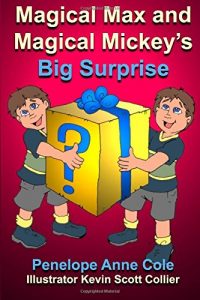
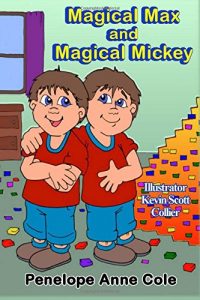
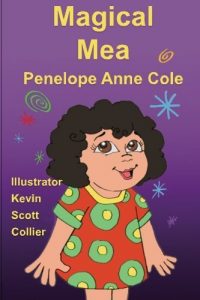


.jpg)
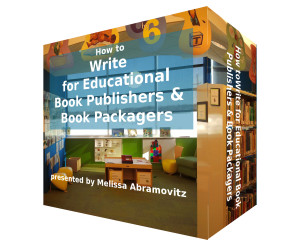
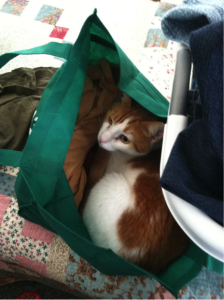
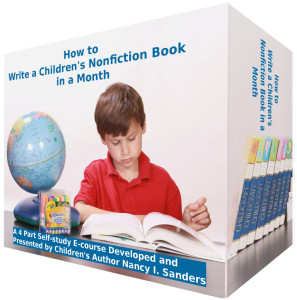
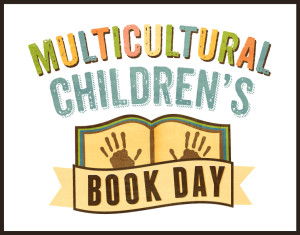
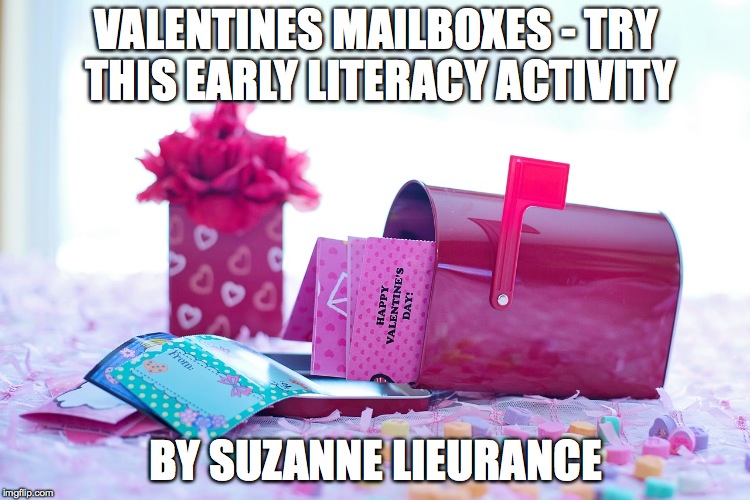
 Michael Selden lived all over the world as a child, and spent a career as a physicist and program manager on research projects, both international science projects and advanced development programs for the department of defense.
Michael Selden lived all over the world as a child, and spent a career as a physicist and program manager on research projects, both international science projects and advanced development programs for the department of defense.















Magical Max and Magical Mickey’s Big Surprise Like their magical older brother and sister, Matt and Mea, nine year old twins Max and Mickey knew they’d soon lose their magic. But they are determined to build an amazing graduation gift before their magic runs out. Will they make it in time and what is their Big Surprise?
Magical Max and Magical Mickey
Matt is going off to college and Mea is entering middle school. At their family emergency meeting, Matt and Mea are surprised to learn Mom is having twin baby boys. Matt, Mea, and Grandma Nonie watch and wonder if twins Max and Mickey will be magical, too? For readers: Ages 5 -8
Magical Mea (The Magical Series) (Volume 2)Matthew’s little sister Mea is a trickster. Mea got her magic when Matthew lost his. Matthew tries to guide Mea to use her magic for good. But the more Matthew tries to mentor Mea, the more she wants to “do it her way.” Matthew worries Mea might get into trouble.
The post Books by Penelope Anne Cole appeared first on The National Writing for Children Center.